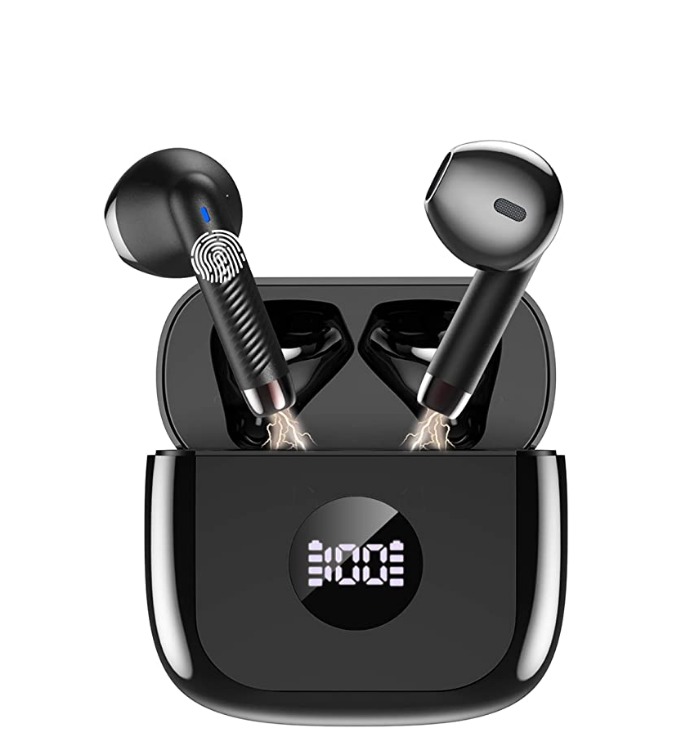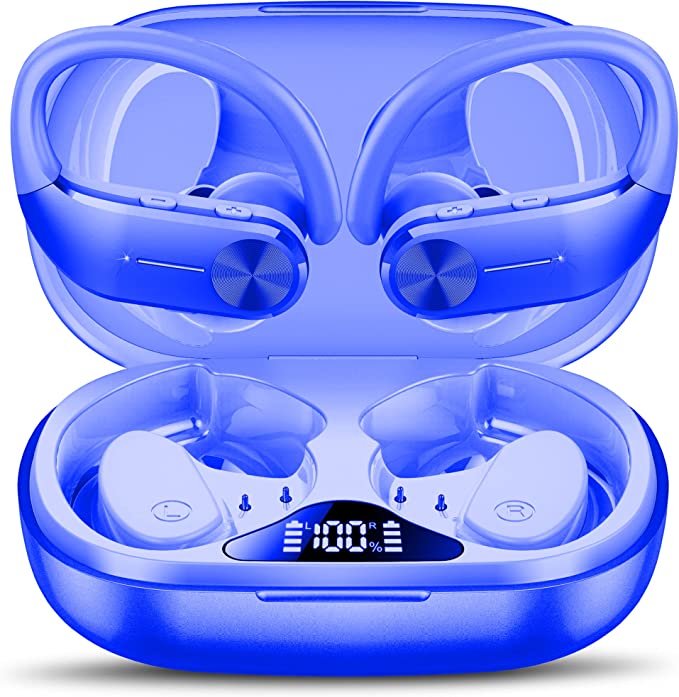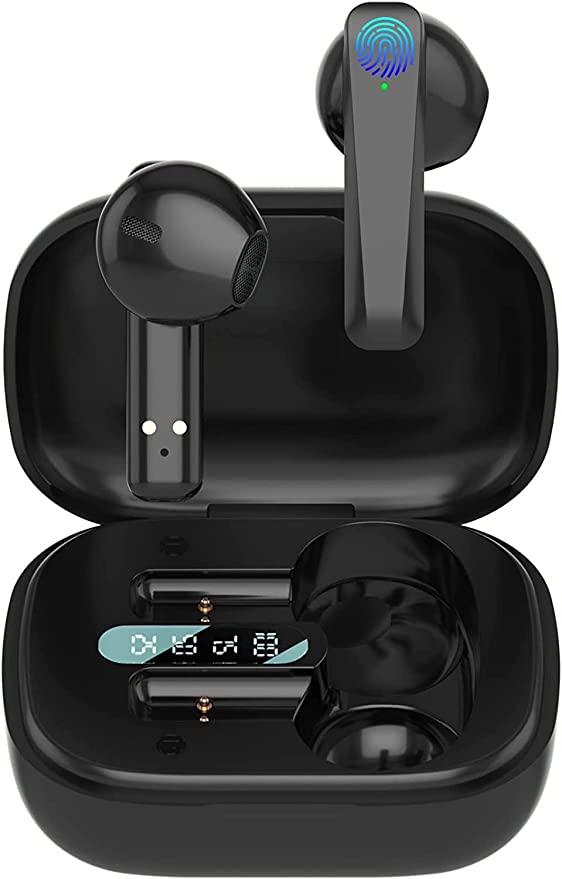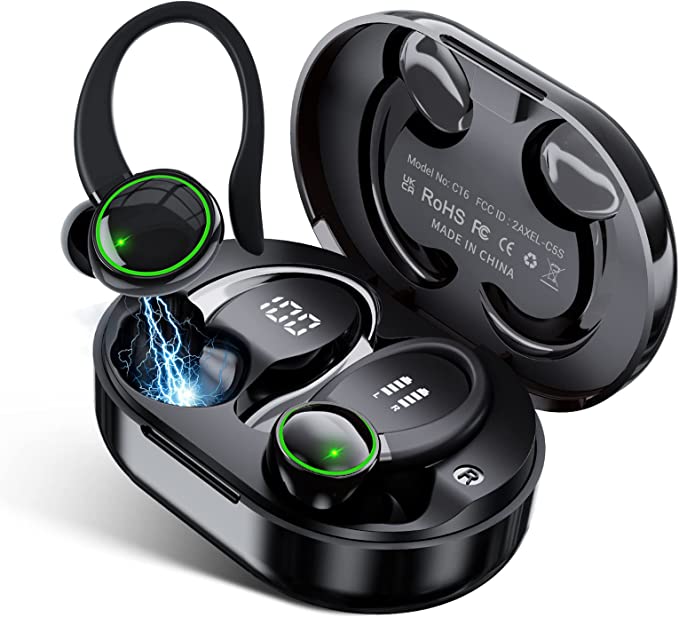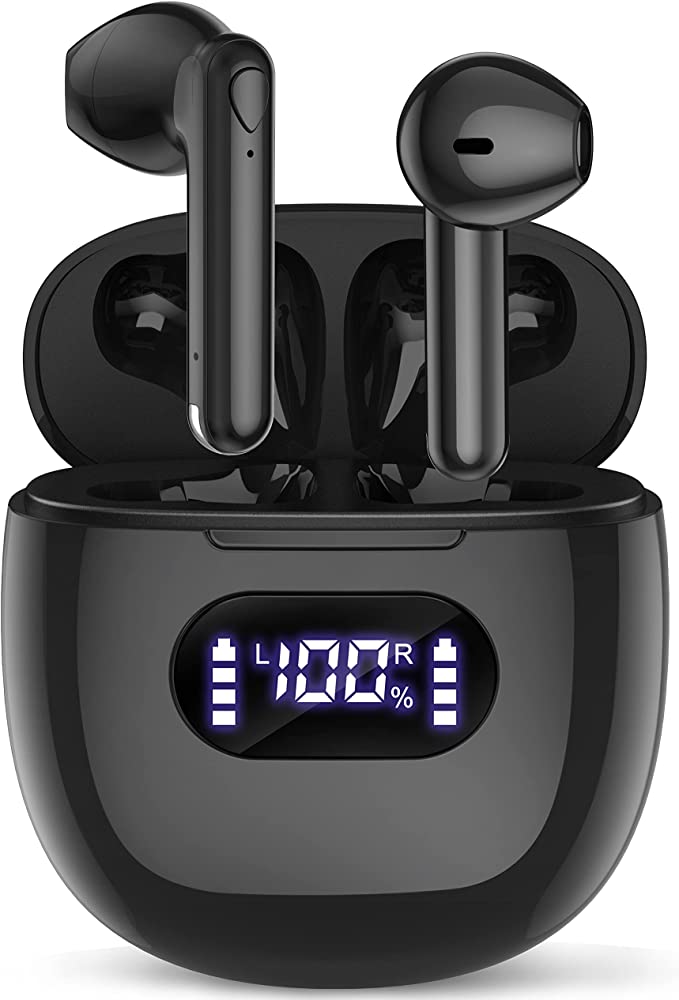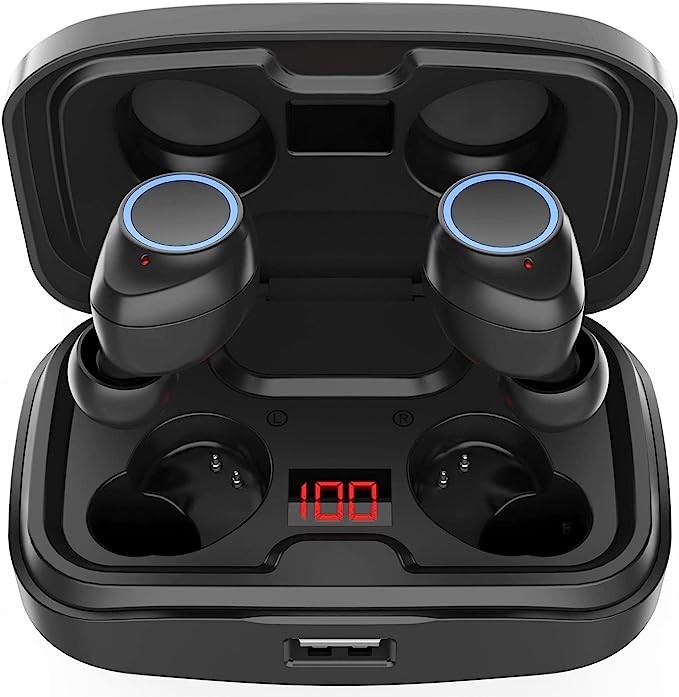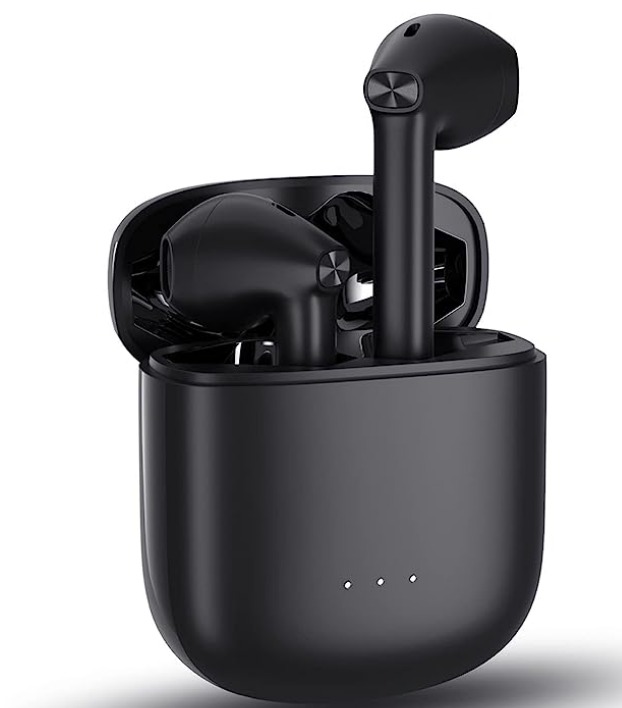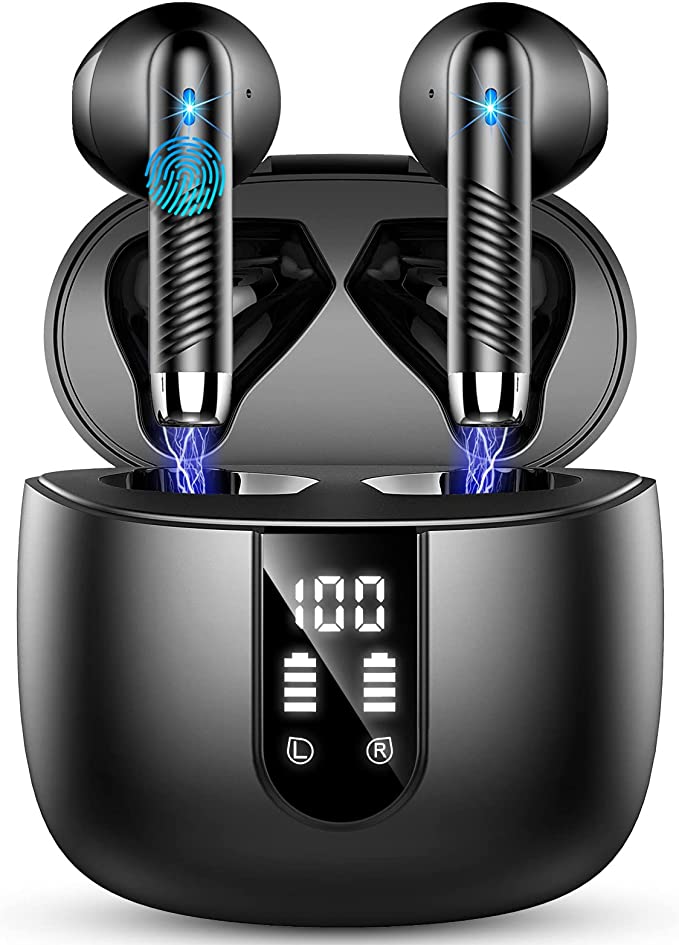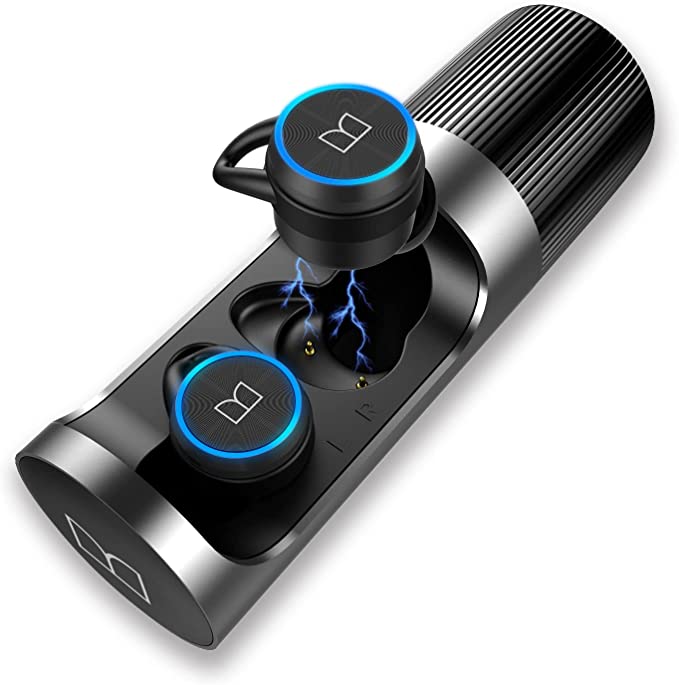1 Hora AUT201 Wireless Earbuds – Powerful Bass and Advanced Features
Update on July 3, 2025, 4:40 a.m.
There’s a ghost that haunts our modern lives, a phantom of tangles and snags. It’s the ghost of the headphone wire. For decades, it was our tether to the world of personal audio, a physical leash to our music and podcasts. Today, its absence feels like magic. We move freely, untethered, our soundtracks seamlessly integrated into the motion of our lives. But as this magic becomes more commonplace, encapsulated in affordable devices like the 1 Hora AUT201 Wireless Earbuds, a fascinating question arises: How did this powerful spell become so accessible to everyone?
The answer, remarkably, begins not in a silicon valley lab, but with a 10th-century Viking king and the fundamental laws of physics. By dissecting a simple pair of earbuds, we can uncover a story of technological evolution and scientific principles that have conspired to put a pocket-sized symphony at our command.

The Conductor’s Evolving Command: A Brief History of a Bluetooth
Every wireless orchestra needs a conductor. In our earbuds, that conductor is Bluetooth. The name itself is a fantastic piece of history, a tribute to King Harald “Bluetooth” Gormsson, famed for uniting the disparate tribes of Denmark and Norway. In the same spirit, Bluetooth technology was created in the 1990s to unite different devices—phones, laptops, peripherals—under one wireless standard.
But the early versions of this conductor were, to be frank, not very skilled. They struggled with low bandwidth (choppy music), high latency (that annoying delay between video and sound), and poor power management (drained batteries). The journey from Bluetooth 1.0 to the Bluetooth 5.3 found in the AUT201 is the story of a conductor relentlessly honing their craft.
Think of Bluetooth 5.3 as a master conductor who has perfected three key skills:
- Clarity of Command (Stability): It communicates with your phone using a wider, more robust signal, drastically reducing the chance of dropouts. This is the difference between a clear, uninterrupted performance and one plagued by stumbles.
- Impeccable Timing (Low Latency): It has minimized the delay between signal and sound to an almost imperceptible level. For us, this means the satisfying sync of dialogue to lips when watching a movie, or the instant feedback needed for gaming.
- Endless Stamina (Power Efficiency): It directs the orchestra with such efficiency that it barely breaks a sweat, sipping power instead of guzzling it. This is how a tiny battery inside each earbud can last for five hours, and how the charging case can keep the show going for over 22 hours.
This highly evolved conductor is the invisible hero, ensuring the signal for our music arrives reliably and on time. But what happens when that signal reaches the orchestra itself?

The Orchestra’s Engine Room: The Thunderous Physics of a Tiny Drum
Inside each earbud sits the heart of the orchestra: a Dynamic Driver. This is the workhorse of the audio world, and its principle is a beautiful application of 19th-century physics. Imagine it as the orchestra’s powerful bass drummer.
The driver works through electromagnetic induction. An electrical signal—our music—flows through a tiny coil attached to a flexible diaphragm (the “drum skin”). This creates a fluctuating magnetic field, which interacts with a fixed magnet. The result is a rapid, precise vibration of the diaphragm, which pushes and pulls the air in front of it. These compressions and rarefactions of air are the very essence of sound waves, a physical force that travels through the ear canal to our eardrum.
The product’s promise of “deep bass” is directly tied to this mechanism. Low-frequency sounds, the ones we feel as much as hear, have long wavelengths and require moving a substantial amount of air. A dynamic driver, with its relatively large, piston-like diaphragm, is exceptionally good at this task. It’s a tiny air pump, capable of producing the physical punch of a kick drum or the rumble of a bass guitar.
However, even the best drummer sounds weak in an open field. For their sound to have impact, they need the acoustics of a good room. This is where the physical design of the AUT201, with its “comfortable and secure fit,” becomes critical. By creating a tight seal in your ear, it forms a miniature, enclosed concert hall. This seal prevents the precious low-frequency energy from leaking out, allowing the bass to build pressure and sound rich and full. It’s a perfect marriage of physics and ergonomics; the better the fit, the better the bass.

The Concert Hall’s Acoustics: Why Your “Good Sound” Isn’t Mine
Here, we arrive at the most fascinating and personal part of our story. The AUT201 boasts a 4.5-star rating from thousands of users, yet a careful reader will find reviews describing the sound as “very flat.” How can both be true? This is where we move from pure physics into the subtle art of acoustics and the science of perception.
The final sound you hear is shaped by the earbud’s “sound signature,” which is the equivalent of our concert hall’s acoustic design. Manufacturers “tune” their drivers, electronically adjusting which frequencies are emphasized or reduced.
- A “V-Shaped” Hall: Many popular headphones have a V-shaped signature, boosting the low-end bass and the high-end treble. This creates an exciting, energetic sound that makes pop and electronic music feel vibrant.
- A “Neutral” Hall: Other products aim for a “flat” or neutral signature, attempting to reproduce the audio as faithfully as possible to the original recording, without adding coloration. This is often preferred for listening to acoustic, classical, or jazz music where instrumental purity is paramount.

The difference in user reviews, therefore, isn’t necessarily about a product’s quality, but about a mismatch in expectation and preference. A listener accustomed to a bass-heavy sound may perceive a neutral earbud as “flat” or “lifeless.” Conversely, someone who values clarity might find a V-shaped earbud “muddy” or “overwhelming.” There is no single “best” sound, only the sound that is best for you and for your music. It’s a deeply personal choice, a reminder that listening is an act of interpretation.

Encore: The Democratization of the Symphony
As we pull back from our investigation, a remarkable picture emerges. The inexpensive wireless earbuds in our pocket are not simple gadgets. They are miniature symphonies, each with a conductor refined over decades of technological evolution, an orchestra engine powered by classical physics, and a concert hall designed with subtle acoustic artistry.

The true marvel of the 1 Hora AUT201 and devices like it is not merely their existence, but their accessibility. They represent the democratization of a complex chain of innovation. The genius of Viking kings, the insights of 19th-century physicists, and the ongoing work of countless engineers have converged into a product that allows almost anyone to experience the magic of untethered, high-quality sound. And as this pocket symphony continues to evolve, one can only wonder: what new movements will it perform for us in the years to come?

